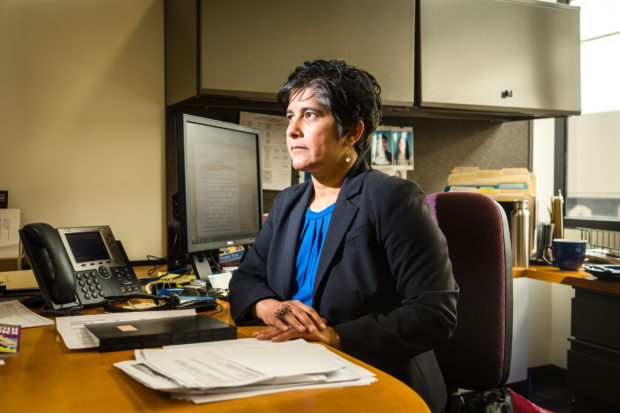Women still lag behind men in pay, report says
LOS ANGELES – Although progress has been made over the past decade, women in California still earn on average 89 percent of what men earn for full-time work, with higher wages for white and Asian women largely responsible for closing the gap, according to a report released Thursday by Mount St. Mary’s University in Los Angeles.
The report by the university’s Center for the Advancement of Women found that the earnings gap shrank overall by five percentage points since 2013, when women earned 84 percent of what men earn for full-time work. But researchers found that the overall narrowing of the wage gap “is driven exclusively by wage increases for white and Asian-American women.”

Women in California still earn on average 89 percent of what men earn for full-time work, according to the Center for the Advancement of Women at Mount St. Mary’s University in Los Angeles. Photo for illustration only
“In contrast, the earnings gap has remained roughly the same for Latinas, and has widened for Black women,” according to The Report on the Status of Women and Girls in California.
More glaringly, when compared solely to the earnings of white men, the wage gap for women widened to 63 percent, the report found.
“Over the course of a 40-year career, the current wage gap – for full-time, year-round workers – would cost a woman in California around $300,000 in lifetime earnings compared to a man,” according to the report.
“That’s significantly less than the nationwide gap of $442,760. But it still means a woman in California has to work until she is 70 years old to earn what her male counterpart will make by age 65.
“… When we look at this lifetime earnings gap through an intersectional lens, the disparity is even more dramatic for women of color.
Latinas in California, for instance, would have to work a full 50 years more than a white man to make up the nearly $2.1 million difference in median earnings.”
Among other key findings in the report:
— Single women are most impacted by the California cost of living. While roughly 33 percent of households in the state do not earn enough income to meet basic needs, that percentage rises to 80% for households led by single mothers with children under 6, compared to 28 percent for married couples.
— Women make up two-thirds of the lowest-paid workers in California’s workforce.
— California has the greatest number of women-owned businesses of any state in the country. Businesses solely or equally owned by women in the state employ 2.6 million people have a combined payroll of $113 billion.
— Among the state’s 25 highest-grossing companies, 34 percent of all executive team members were women.
— While most California women work for private companies, they are overrepresented in nonprofit organizations at 63 percent, and in local government (55%) and state government (53%).
— California women have a life expectancy of about 82 years, compared to 76 years for men.
— Since they have less discretionary incoming, females in California are more likely to forego medical care, with 18% delaying treatment, compared to 13 percent for males.
The “lack of pay equity for women is a question of ethical fairness, yes. But it also impacts everything in women’s lives — our economic security, our health, our wellness, our time, our families, and our communities. Everything,” Nicole Haggard, director of the Center for the Advancement of Women, wrote in a message in the report.
“As our researchers and partners highlight in this report, there are hidden costs of being a woman, too. And we find them in just about every area of our lives. From health care to beauty standards. From a lack of access to venture capital to invisible domestic labor and unbalanced carework. Partnered and single women are consistently paying more and receiving less.”
The report examined an array of financial aspects of women’s lives in the state and nationally, citing studies that determined that women across the country save less than 50% of what men save annually. It also pointed to studies showing that women in general own $80 for every $100 a man owns, and that for every $100 owned by white women, Latinas have $10 and Black women have $9.
According to the report, women also have higher incidences of mental health issues or emotional distress.
“While percentages vary — women across the board experience a greater amount of emotional distress, and the increase from 2017 (11%) to 2022 (19%) is seen among all women, of all races and ethnicities,” the report found. (CNS)

